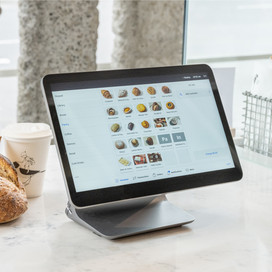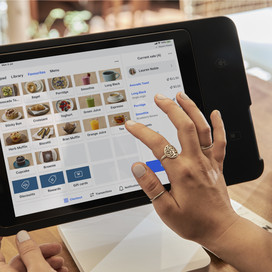Table of contents
Starting your own catering business can be an incredibly rewarding experience. You can explore your culinary curiosities and share them with others. Or it means you could set your own hours and work from home. Either way, starting a business requires research, analysis and admin, as well as creativity. So put on your chef hat and grab a pad and pen – here’s eight steps to starting a catering business.
1. Research your market
Researching the market is the essential first step for any business. You need to know what else is out there so you enter the market with a relevant, original and attractive offering.
This process is most effective and enjoyable when you experience the products and services that already exist first-hand. Go to catered events in your area and further afield, and assess:
Food: what style of food is available including quality, ingredients, dietary considerations and so on
Service: check out how other businesses are serving their market, including opening hours, delivery options and if they provide serving staff
Price point: what is the pricing of each company you come across? Here you can infer the price range people are willing to pay for catering services
As well as assessing other catering businesses, you should be aware of what’s happening more generally in the market, from food trends to what’s affecting discretionary spending more generally in the economy.
2. Define your point of difference
This is where you analyse all aspects of existing catering companies to help you figure out your point of difference, which means the reason people should be coming to you, rather than your competitors. These are the questions to ask when determining your point of difference in any well-considered business:
- What are your competitors doing well?
- What are they missing?
- What is that gap in the market?
- What can you offer that no one else can?
3. Decide on your location and clientele
Your location will be a huge determining factor in who your customers are and what resources you have available to set up and run your business. If you’re operating in a suburban area, providing a catering service where you work from the home kitchen of the hosts and provide serving staff might be desirable. If you’re in the CBD, doing food drop-offs might be more cost-efficient for both you and your customer. Similarly, the needs of domestic customers will be different to corporate clients – are you catering birthday parties and weddings or conferences and meetings? Who are the people that make the final decision to hire your services and what are their needs?
4. Write your menu
Writing your menu is a practical step that will help you figure out multiple aspects of your business from sourcing to costing to logistics to branding. Create a menu that has a unique style, a range of foods appealing to different dietary types and classic options to ensure there’s something for everyone. As you select ingredients and cooking methods you will determine your supply chain, your pricing and what equipment you will need to run your business. For instance, you may require an ethical butcher and a special kind of barbecue to transport to venues if you decide you want to do smoked meat as your hero product.
5. Create your business plan
Business plans are a way to get all your thoughts organised so you can get on the same page as your business partner, for instance, or to secure a business loan to get your business off the ground. A business plan for a catering company is structured as follows:
Executive summary: This is your summarising sales pitch, write this last
Business concept including business model: Your unique offering and how you will deliver it
Market analysis and your target market: Invaluable research into your market and what your competitors are doing in the space.
Sample menu: Displaying creatively will help set the tone of your brand
Cost of goods, pricing and margins: Gather supplier quotes as well as market pricing and research the standard operating margin for like-businesses
SWOT Analysis: Communicate your strengths and weaknesses, and the opportunities and threats that the market poses
Marketing strategy: How will you reach your target market? We will cover this in Step eight
Management team and consultants: The people involved in making this business work and their expertise, from chefs to digital marketing specialists
Financial goals and projections: accountants and financial planners can help here, especially if you need to raise funds through external sources
6. Organise your paperwork
You must go through the licensing process and get your insurances before you start trading. In Australia, each state and territory has different classifications for food businesses, which determines what specific licences you need for your area.
Start by registering an Australian Business Number, and an Australian Company Number with the Australian Securities and Investments Commission (ASIC)
Use the Australian Business Licence and Information service to figure out all state and local licence and insurance types you need by inputting your postcode
Obtain the licences you require, like food business and liquor licenses.
Take out the insurances you need. For a catering company these may be public liability, workers compensation if you’re hiring staff, and more
Implement a Food Safety Program and inform your local authority
Hire or train a Food Safety Supervisor
7. Set up your facility, equipment and technology
The kitchen you’re planning to operate out of could be a purpose-built kitchen at your own brick-and-mortar location, a shared commercial kitchen or your home kitchen. You’ll need to consider affordability when renting or buying, the demographics or your location and how close you are to your target market and the size and layout of the space you’re working from.
The purchasing of assets like kitchen equipment and vehicles will depend on what you’re cooking and how you’re planning to transport it to customers. Catering businesses typically need ovens, stovetops, work benches, fridges and freezers – the volume of ingredients and finished dishes will need to be considered for storage and food processing requirements.
How To Open A Pizza Shop and How To Start A Bakery are both great references for what you might need to consider for different styles of food and cooking.
Preparing for your office is the essential final step before you start cooking! Square’s POS for Restaurants includes staffing and inventory management as well as payment processing.
8. Brand and market your catering business
So you’re ready to launch! Your catering business needs to be appealing, easy to find and engaging for your potential customers. Here are a few marketing must-haves!
Logo and content
Articulating the values of your company to a graphic designer can be a way to create a brand that represents you and cuts through the noise. As well as a logo, asking them to create guidelines for your imagery is important – this is how to make your food appealing and attention-grabbing on printed and digital media.
Website and social media
Websites are a home base for all the information a client needs to hire your services and paid and organic social media is a way to drive people to your website, as well as a tool for customer service. Hiring a marketing specialist to set up your sales funnel is a worthwhile investment – or building your own website and mailing lists are easy!
Promotion and launch
Depending on the style of your catering business, don’t underestimate using flyers in your local area with an opening discount. Friends-and-family events are also a common way to kick-start your catering business, hosting a party or culinary event to begin building your network of clientele.
This article is for informational purposes only and does not constitute professional advice. For specific advice applicable to your business, please contact a professional.
![]()












